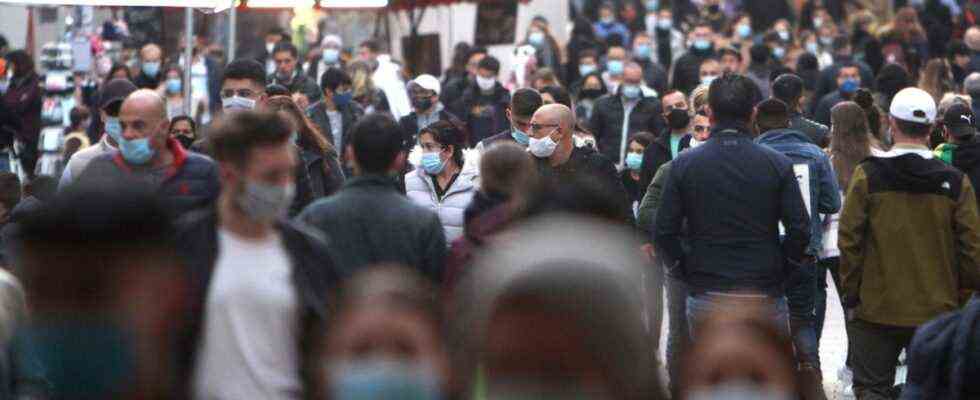Corona has slowed down population growth in the greater Munich area for the time being. The latest figures from the Planning Association for the External Economic Area (PV) confirm that not only did far fewer people move to the region in 2020 than in the years and decades before, there were also fewer births, but more deaths. In the first year of the pandemic, the Munich metropolitan area was thus attested to very low growth of 0.17 percent, while the average annual change in the number of inhabitants between 2009 and 2019 was around one percent. In some districts around Munich, the population even shrank in 2020.
Since 1999, the curve of the number of inhabitants in the region has been pointing steadily upwards. The steady population growth was due in particular to immigration from abroad. 12,000 to 25,000 people came annually, “last year there were only 500,” said PV managing director Christian Breu at a meeting of the association on Tuesday afternoon in Oberhaching. Only two districts have grown quite well, others recorded declines. While the pandemic-related zero round is less noticeable in Erding with an increase of 0.51 percent and Landsberg am Lech (0.60 percent growth), Fürstenfeldbruck has 571 fewer inhabitants than before the Corona crisis (minus 0.26 percent).
Also in the prosperous district of Munich there are now 788 people (0.22 percent) less than in 2019. With growth of 0.27 percent, the state capital is still a little above the average in the region. However, Breu had to admit: “You don’t yet know where that comes from.” The data situation is still too bad.
However, it confirms what the Helmholtz Center for Environmental Research recently showed in a discussion paper. The scientists identified a temporary end to the boom in 15 large German cities. Growth slowed the most in Munich, Stuttgart and Frankfurt. As it looks, long-term trends in population development were slowed down or interrupted in the first Corona year 2020, according to the paper. “This becomes particularly clear with migration,” write the scientists, but also refer to the so-called natural balance, i.e. the difference between births and deaths. This has generally developed in the negative direction.
In the Munich region, the natural balance fell significantly from 7134 to 5446. In 2020, 31,083 children were born in the greater Munich area and 25,637 people died. The district of Starnberg (-255) is clearly in the red, which was already the case in 2019 (-206). In the Munich district, on the other hand, there was still a positive balance before Corona, which turned negative in 2020. There were 176 more deaths than births.
A look at the number of jobs also confirms the severely slowed growth. While in the previous years an average of three percent more employees subject to social security contributions were registered, the number of these jobs rose by just 0.01 percent in 2020. The Starnberg district still recorded an increase of almost one percent during the crisis, and Fürstenfeldbruck also saw increases (0.61 percent). The district of Munich (-0.33) and in particular the district of Freising (-1.13), on the other hand, recorded a slump, which Breu attributes primarily to the airport.
Passenger numbers have been rising again since October, but “at a very low level”. Overall, the labor market is slowly recovering, but has not yet reached the level of 2019. Breu is certain: “The region is coming through the crisis with stagnation, it will remain sideways for two to three years.”

